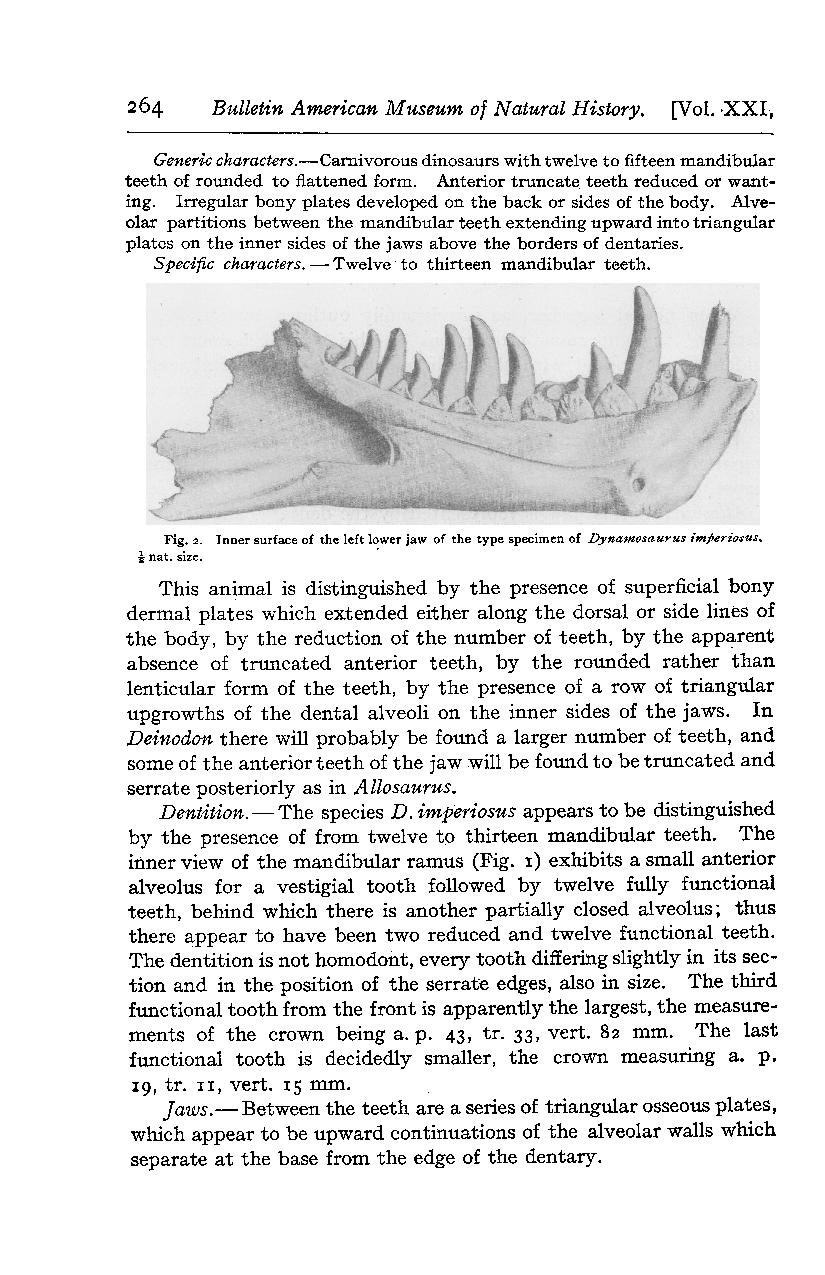Generic characters.—Carnivorous dinosaurs with twelve to fifteen mandibular teeth of rounded to flattened form. Anterior truncate teeth reduced or wanting. Irregular bony plates developed on the back or sides of the body. Alveolar partitions between the mandibular teeth extending upward into triangular plates on the inner sides of the jaws above the borders of dentaries.
Specific characters.—Twelve to thirteen mandibular teeth.

This animal is distinguished by the presence of superficial bony dermal plates which extended either along the dorsal or side lines of the body, by the reduction of the number of teeth, by the apparent absence of truncated anterior teeth, by the rounded rather than lenticular form of the teeth, by the presence of a row of triangular upgrowths of the dental alveoli on the inner sides of the jaws. In Deinodon there will probably be found a larger number of teeth, and some of the anterior teeth of the jaw will be found to be truncated and serrate posteriorly as in Allosaurus.
Dentition.—The species D. imperiosus appears to be distinguished by the presence of from twelve to thirteen mandibular teeth. The inner view of the mandibular ramus (Fig. 1) exhibits a small anterior alveolus for a vestigial tooth followed by twelve fully functional teeth, behind which there is another partially closed alveolus; thus there appear to have been two reduced and twelve functional teeth. The dentition is not homodont, every tooth differing slightly in its section and in the position of the serrate edges, also in size. The third functional tooth from the front is apparently the largest, the measurements of the crown being a. p. 43, tr. 33, vert. 82 mm. The last functional tooth is decidedly smaller, the crown measuring a. p. 19, tr. 11, vert. 15 mm.
Jaws.—Between the teeth are a series of triangular osseous plates, which appear to be upward continuations of the alveolar walls which separate at the base from the edge of the dentary.

